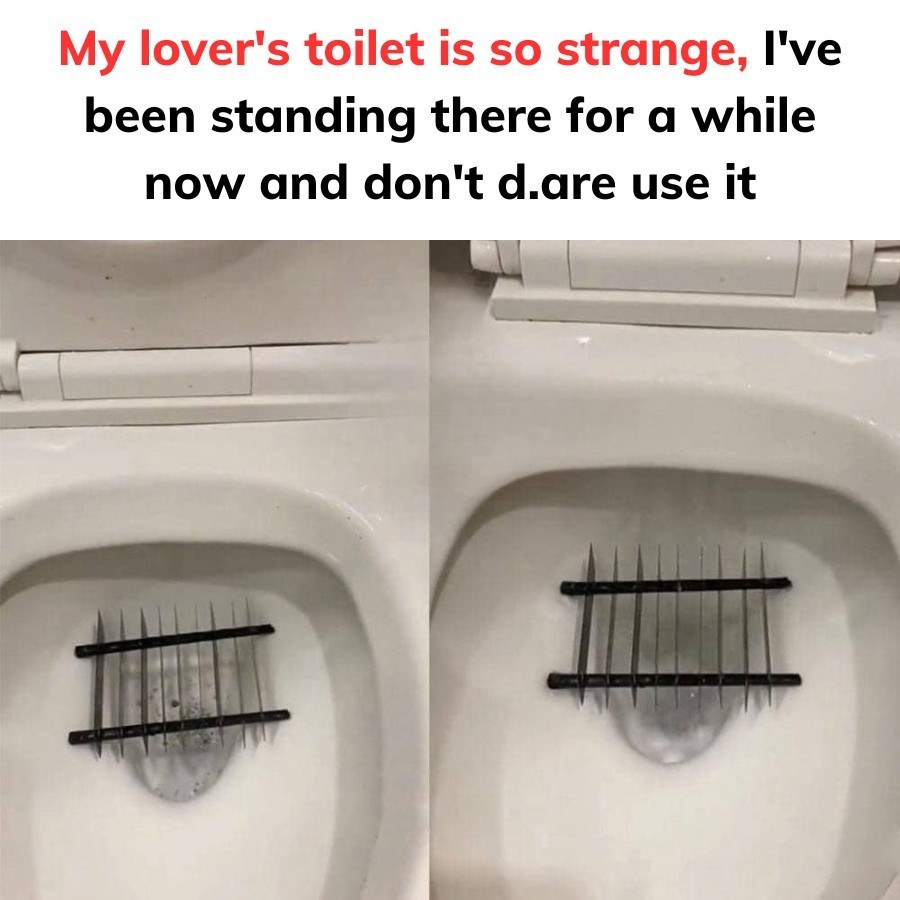
When we think of toilets, the standard image that comes to mind includes a seat, a flush mechanism, and perhaps modern enhancements like a bidet or heated seating. However, encountering an unfamiliar apparatus within the toilet can be both puzzling and concerning. A particular device featuring a grid of metal spikes positioned in the drain area has garnered attention and curiosity. This article delves into the function and necessity of this peculiar addition.
Deciphering the Spiked Grid: A Barrier Against Unwanted Intruders
At first glance, the spiked grid may appear as an odd or even intimidating fixture. Its primary purpose is to serve as a deterrent against animals that might navigate through sewer systems and emerge into household toilets. In certain regions, especially those with older or less maintained plumbing infrastructures, incidents of rodents or other small creatures infiltrating homes via toilets have been reported. The spiked device acts as a one-way barrier: it permits waste and water to flow out while preventing animals from entering.
The Phenomenon of Animals in Toilets: An Unsettling Reality
The notion of creatures surfacing through toilets is unsettling yet grounded in reality. Urban sewer systems, characterized by extensive networks of pipes, can inadvertently provide pathways for animals such as rats and snakes. These creatures are adept at navigating confined spaces and may find their way into residential plumbing, leading to unexpected and distressing encounters for homeowners.
Mechanics of the Protective Device
The spiked grid is ingeniously designed to balance functionality with protection. While its spikes deter animals from ascending into the toilet bowl, the grid’s configuration ensures that the essential flow of water and waste remains unimpeded. This design maintains the toilet’s operational efficiency while adding a layer of security against potential intrusions.
Assessing the Necessity: Is This Device Essential for Your Home?
For residents in locales with modern, well-maintained plumbing systems, the likelihood of animal intrusions via toilets is minimal. However, in areas with aging infrastructure, frequent pest issues, or proximity to wildlife habitats, installing such a device can offer peace of mind and enhance household hygiene. Evaluating local conditions and consulting with plumbing professionals can aid in determining the relevance of this precautionary measure for your home.
Perceptions of the Unfamiliar: Understanding the Surprise
The presence of an unconventional device in a commonplace fixture like a toilet can evoke surprise and curiosity. This reaction underscores how certain domestic systems are often taken for granted until anomalies arise. Recognizing the purpose behind such additions fosters a deeper appreciation for the measures designed to ensure our comfort and safety within our living spaces.
Proactive Measures to Safeguard Your Bathroom
Beyond installing protective devices, maintaining a secure and hygienic bathroom environment involves regular plumbing inspections, sealing potential entry points for pests, and staying informed about local wildlife behaviors. These proactive steps contribute to minimizing the risk of unexpected encounters and preserving the sanctity of your personal space.
In summary, while the spiked grid in toilets may initially appear peculiar, its role in preventing animal intrusions is both practical and significant. Understanding and considering such measures can enhance household safety and provide reassurance against the unforeseen.
